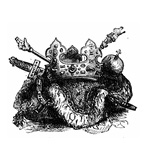
The Native American Martyrs of Syracuse
A WITNESS THAT SHOULD NOT BE LOST
The Travels and Explorations of the Jesuit Missionaries in New France, 1610-1791, commonly known as The Jesuit Relations and Allied Documents, reports the martyrdoms of many Native American converts to Catholicism. Not one has been canonized by the Church. Thus, in a fat arc sweeping from the Gulf of St. Lawrence, in eastern Canada, through Hudson Bay and the Great Lakes and down the Mississippi River to the Gulf of Mexico, there are many dioceses that could pursue the causes of local Native American martyrs for the honor of God and the deepening of the faith of Christ’s people.
The Diocese of Syracuse, New York, can serve as an example. It stretches from Lake Ontario to the Pennsylvania border in upstate New York. Quite by accident, in 1994 members of the Unity Kitchen Community of the Catholic Worker in Syracuse discovered that several Native Americans had been martyred nearby in 1657, 1690, 1692, and 1693. The names of four of these martyrs are recorded; the names of the rest are not.
As the Catholic Workers learned, three of these martyrs had been proposed for canonization by the bishops of the United States in 1941, along with 113 other candidates from across this vast country, under the title Commission for the Cause of Canonization of Martyrs of the United States (published in book form in 1957 as The Martyrs of the United States of America: Manuscript of Preliminary Studies Prepared by the Commission for the Cause of Canonization, and Related Essays). Despite an inquiry to Rome by the Jesuits of Syracuse in the 1990s, the cause is on hold, partly because it is now the policy of the Holy See to have each group of martyrs from each specific time and place enjoy its own cause.
Pope St. John Paul II, in his apostolic letter Tertio Millenio Adveniente (1994), urged local churches to pursue causes that pertain to their territory. “As far as possible,” the Supreme Pontiff wrote, the martyrs’ “witness should not be lost to the Church…. The local Churches should do everything possible to ensure that the memory of those who have suffered martyrdom should be safeguarded, gathering the necessary documentation” (no. 37).
You May Also Enjoy
Though the Indians held the Black Robes in high regard, one -- above all others -- gained the respect and trust of the Native tribes.
When we move from the spiritual good of love to its material, concrete incarnation, we move into the realm of material goods that diminish by division.
Artists are prophetic because they see and experience what those at a distance take longer to see.

